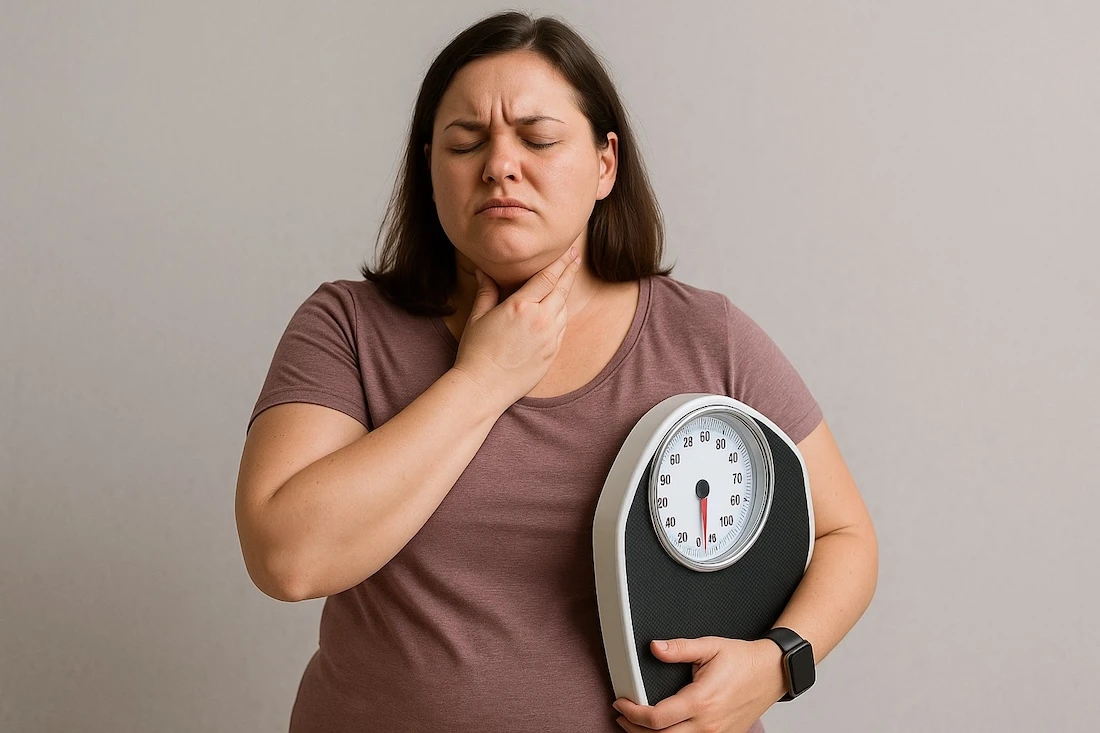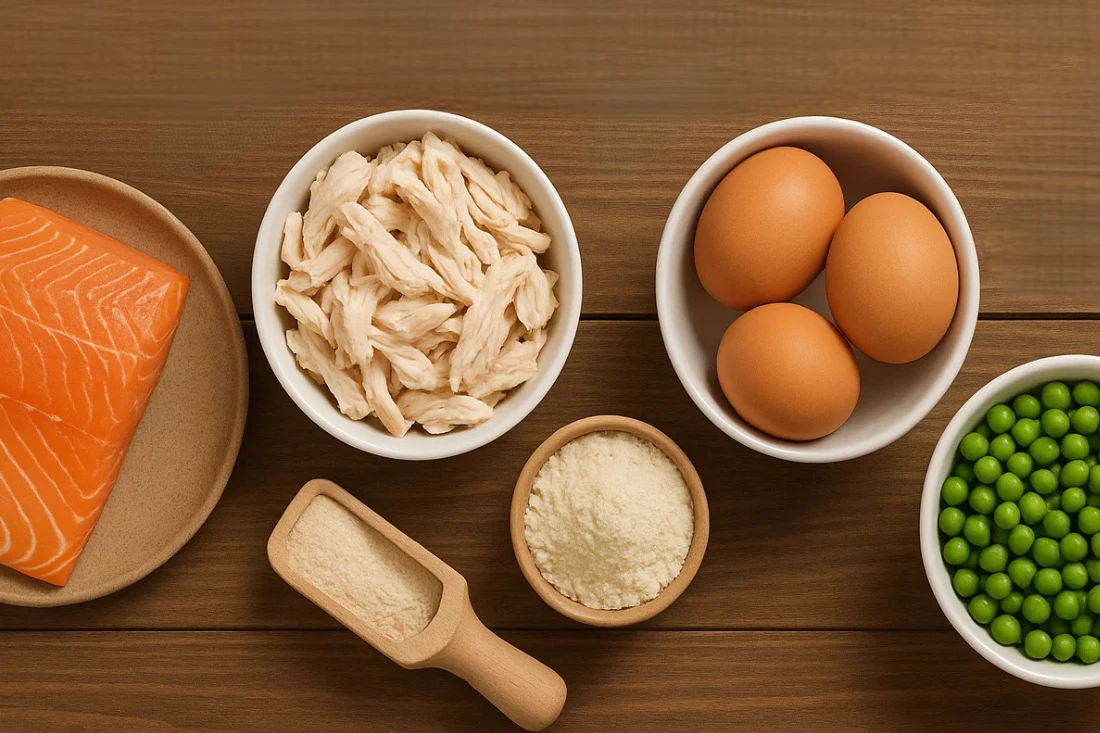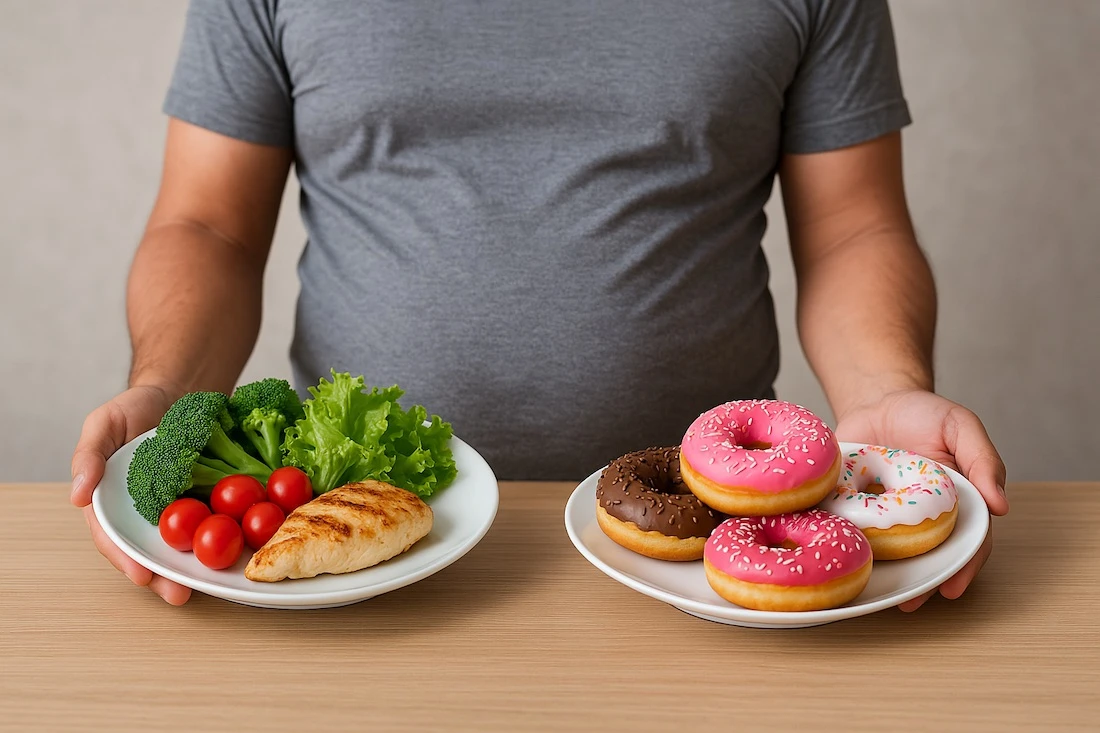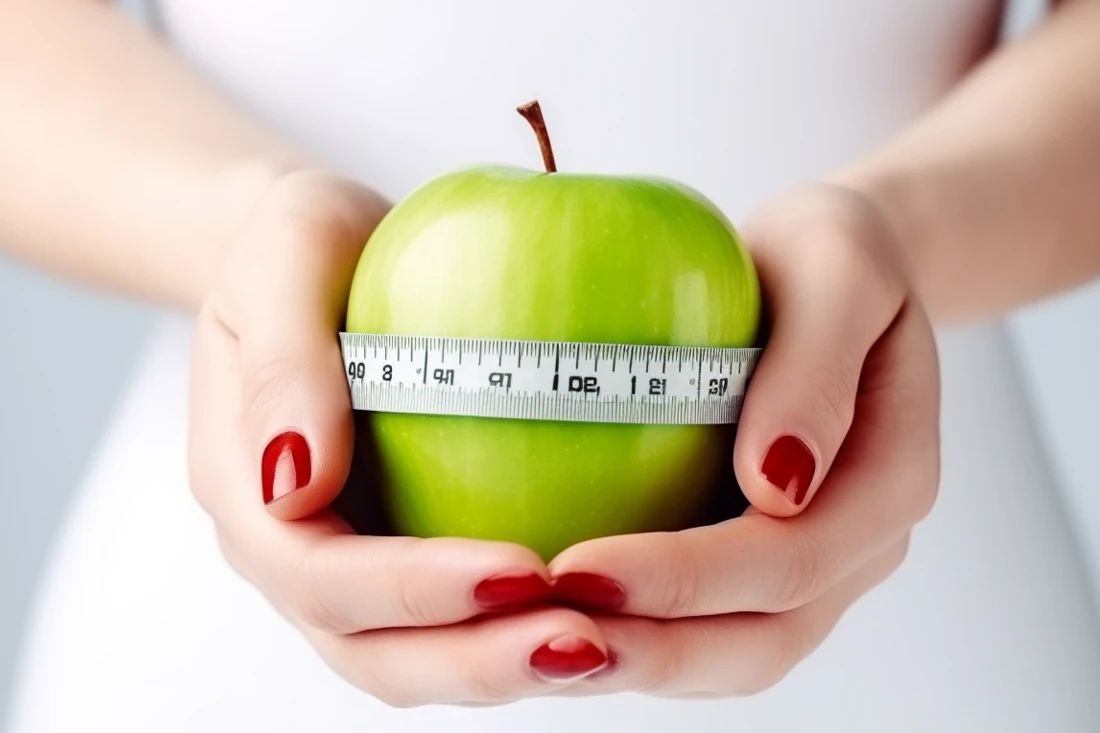Understanding your body’s calorie needs is crucial in the journey towards effective weight management. With so much conflicting information available, knowing how many calories you should consume can be challenging yet essential for your health goals.
Caloric intake varies based on numerous factors, including age, activity level, and personal fitness objectives. Whether you’re aiming to bulk up, maintain your current weight, or shed some pounds, recognizing how to calculate your caloric needs allows for better nutrition and exercise strategies tailored to your individual requirements.
Calorie Needs Calculator
In this article, we will delve into the intricacies of a Calorie Needs Calculator—exploring methodologies such as Total Daily Energy Expenditure (TDEE) and Basal Metabolic Rate (BMR), understanding the role of diet and exercise, and addressing common challenges encountered along the way. Our goal at SlimCare Solutions is to empower your health journey with expert advice and personalized insights that promote lasting results.
Understanding Daily Caloric Intake
For many, deciphering daily caloric needs is pivotal to maintaining a healthy lifestyle. Caloric requirements fluctuate due to various factors like age, sex, body size, and activity levels. Typically, estimates range from 1,600 to 3,000 calories per day.
The Mifflin-St Jeor Equation is a popular method to compute Basal Metabolic Rate (BMR)—an indicator of the calories your body needs at rest. For those familiar with their body fat percentage, the Katch-McArdle Formula offers more precise results by accounting for lean body mass.
Here’s a quick guide to understanding your calorie needs:
- Determine your BMR using either the Mifflin-St Jeor Equation or Katch-McArdle Formula.
- Adjust for activity level:
· Sedentary: BMR x 1.2
· Light exercise: BMR x 1.375
· Moderate exercise: BMR x 1.55
· Very active: BMR x 1.725
Calorie tracking can refine nutritional awareness by spotlighting intake and promoting informed decisions. Remember, regular physical activity boosts caloric expenditure, aiding in weight management and supporting weight loss journeys. At SlimCare Solutions, we specialize in personalized weight loss programs designed to meet your unique health goals.
Importance of Calculating Caloric Needs
Understanding your daily caloric needs is a cornerstone in achieving effective weight management and maintaining a healthy lifestyle. Estimating your Resting Metabolic Rate (RMR) alongside your physical activity levels allows for a personalized approach to determining daily caloric requirements. According to the U.S. Department of Agriculture, women generally need 1,600 to 2,400 calories daily for weight maintenance, while men require 2,000 to 3,000.
Using a Calorie Needs Calculator helps establish a daily calorie goal, crucial for preventing weight gain and directing weight loss efforts. Increasing physical activity is especially beneficial, as it enhances caloric expenditure, aiding in weight loss and promoting overall health.
Here’s why calculating caloric needs is essential:
- Weight Management: Allows you to maintain, lose, or gain weight as desired.
- Nutritional Awareness: Encourages mindful eating by emphasizing portion control and reducing consumption of empty calories.
- Customized Solutions: Tailors dietary plans to individual metabolic rates and activity levels.
Incorporating these insights into your routine can help you reach weight loss goals effectively, making use of proven strategies provided by experts such as SlimCare Solutions in Orangevale, California.
Different Fitness Goals
Achieving your desired fitness goals requires a tailored approach to caloric intake, dependent on whether you’re aiming to lose weight, gain muscle, or maintain your current physique. The key lies in understanding your daily calorie requirements and adjusting them according to your fitness objectives.
Bulking
Bulking is a popular goal for those looking to increase muscle mass while minimizing fat gain, often referred to as lean or clean bulking. To achieve this, your daily calorie intake should exceed your maintenance level. Typically, men need about 2,400 to 3,000 calories per day to maintain their weight, while women require about 1,800 to 2,400. You can adjust these figures to support a healthy weight gain of 1 to 2 pounds per week. Staying aware of your activity levels and the specific demands of your workout regimen is essential in calculating an effective caloric intake for bulking.
Here’s a quick reference:
Gender | Maintenance Calories | Bulking Calories (Est.) |
|---|---|---|
Men | 2,400 – 3,000 | Increase by 500 – 1,000 calories |
Women | 1,800 – 2,400 | Increase by 500 – 1,000 calories |
Maintenance
For weight maintenance, the goal is to balance calorie intake with energy expenditure. Adult males need between 2,000 to 3,000 calories daily, whereas females require approximately 1,600 to 2,400 calories. Both the Resting Metabolic Rate (RMR) and personal physical activity levels are significant components in determining these needs. Regular physical activity not only helps maintain caloric balance but also promotes overall health and prevents unnecessary weight gain.
To ensure proper health without compromising essential nutritional needs, it’s crucial to accurately estimate your daily caloric requirements based on factors such as age and activity level.
Cutting
Cutting involves reducing body fat while retaining as much muscle mass as possible. A common strategy is creating a calorie deficit, usually between 500 to 1,000 calories per day, which can result in a weight loss of up to 2 pounds per week. However, exceeding a 1,000-calorie deficit isn’t recommended since losing more than 2 pounds weekly can have adverse health effects.
Using methods like the Mifflin St. Jeor Equation can provide an accurate starting point for calculating your caloric needs and setting weight loss goals. Pairing a controlled calorie deficit with regular exercise and a protein-rich diet is optimal for retaining muscle while achieving effective fat loss.
Below is an example of a cutting approach:
- Daily Calorie Goal: Basal Metabolic Rate (BMR) – 500 to 1,000 calories
- Protein Intake: Maintain high to support muscle mass
Different fitness goals require personalized strategies. With the right approach to caloric intake, whether you’re bulking, maintaining, or cutting, your journey becomes more efficient, all while supporting long-term health objectives. At SlimCare Solutions in Orangevale, California, expert plans can help you navigate these paths, ensuring that your fitness goals align with your lifestyle and health needs.
Key Calculation Methodologies
When embarking on a weight loss or wellness journey with SlimCare Solutions, understanding how to calculate caloric needs is fundamental to achieving your health goals. Here, we explore essential methods for determining caloric requirements to support your personalized weight loss program.
Total Daily Energy Expenditure (TDEE)
Total Daily Energy Expenditure (TDEE) is a vital metric that encompasses all the calories you burn on a daily basis. It serves as a comprehensive guideline for caloric intake, facilitating effective weight management. To calculate TDEE, you begin with the Basal Metabolic Rate (BMR), which measures energy use while your body is at rest, accounting for vital functions such as breathing and circulation.
The Mifflin-St Jeor Equation is the preferred method for estimating BMR and is favored for its accuracy over the revised Harris-Benedict Equation. Once you’ve established your BMR, you adjust this figure with an activity multiplier to accommodate varying activity levels. This adjustment considers the intensity, frequency, and duration of physical activities, providing a clearer picture of daily energy expenditure.
Here’s a simplified way to understand activity multipliers:
- Sedentary (little to no exercise): BMR x 1.2
- Lightly active (light exercise/sports 1-3 days/week): BMR x 1.375
- Moderately active (moderate exercise/sports 3-5 days/week): BMR x 1.55
- Very active (hard exercise/sports 6-7 days a week): BMR x 1.725
- Super active (very hard exercise/physical job & exercise twice daily): BMR x 1.9
Basal Metabolic Rate (BMR)
Basal Metabolic Rate (BMR) is crucial for assessing how much energy your body requires at a resting state. Properly calculating BMR is the cornerstone of determining your caloric needs on a daily basis. For most individuals, the Mifflin-St Jeor Equation provides the most accurate estimation:
- For Men: BMR = (10 × weight in kilograms) + (6.25 × height in cm) – (5 × age) + 5
- For Women: BMR = (10 × weight in kilograms) + (6.25 × height in cm) – (5 × age) – 161
These calculations take into account weight, height, age, and gender, all significant factors that influence your body’s caloric requirements. Once your BMR is established, it acts as a foundation to determine TDEE by factoring in daily activity levels.
Macro Distributions
To effectively reach your weight loss goals, attention must also be given to macro-nutrient distributions. Altering these ratios can help overcome weight loss plateaus and enhance fat loss. While calorie restriction is a common strategy, it’s crucial to maintain a balanced approach to avoid a consequent metabolism slowdown.
Here are some key strategies:
- Implement calorie cycling or zig-zagging to keep metabolic rates active.
- Incorporate increased cardio and weight training to augment energy expenditure.
- Introduce occasional ‘cheat’ meals to reset metabolism and prevent stagnation.
- Ensure adequate sleep and hydration to support these dietary adjustments, keeping energy levels and overall health intact.
By leveraging these methodologies, SlimCare Solutions helps you navigate your unique path to a healthier lifestyle, paving the way for sustainable weight management and wellness.
Factors Influencing Caloric Needs
Understanding your daily calorie needs is crucial for achieving and maintaining healthy weights. At SlimCare Solutions, we emphasize personalized weight loss and wellness programs that cater to your unique needs. Several key factors influence your caloric demands, including age, height, body fat percentage, and activity level. Let’s explore how these elements contribute to crafting a personalized daily calorie requirement.
Age
Calorie needs often decline with age. This is due to reduced physical activity and changes in body composition, like the loss of muscle mass and gain in fat mass. Younger individuals generally have higher caloric needs. For example, a 35-year-old active woman requires more calories than a 65-year-old woman at the same activity level. Adjustments in calculating daily calories are made based on age: individuals under 25 add 0.5 to their base value, while those over 45 subtract 0.5. Understanding these age-specific metabolic changes is vital for setting realistic weight loss goals.
Height
Height directly influences Basal Metabolic Rate (BMR), impacting your daily energy expenditure. Taller individuals typically require more calories to maintain their CURRENT WEIGHT. Men taller than 185 cm, for instance, add +1 to their calorie calculation, while women taller than 170 cm do the same. Conversely, shorter individuals might need to decrease their base value, with men under 167 cm subtracting -1 and women under 153 cm subtracting -1 as well. By taking height into account, the calorie calculator can offer a tailored caloric intake recommendation that incorporates your specific body dimensions.
Body Fat Percentage
Body fat percentage, which can be measured using body fat calipers, provides insight into the percentage of fat relative to overall body mass. For men with body fat percentages below 10%, the calorie calculation base value sees a +0.5 increase, whereas percentages between 20-24% and 25-29% result in decreases of -0.5 and -1.5, respectively. Women see similar adjustments based on their body fat percentage. Integrating these calculations helps create an effective weight loss program by precisely adjusting caloric intake to suit body composition.
Activity Level
Activity levels play a significant role in determining your daily caloric needs. Our calorie counters at SlimCare Solutions classify activity into five categories: Sedentary, Lightly Active, Moderately Active, Very Active, and Extra Active. Each level denotes varying frequencies and intensities of physical activity. For example, a Sedentary Lifestyle—which involves little to no exercise—typically aligns with low daily calorie expenditure. Conversely, those in the Very Active or Extra Active categories, engaging in hard exercise most days of the week, have elevated daily calorie requirements. Understanding your activity level helps establish a daily calorie goal tailored to your physical activity routine.
A comprehensive understanding of your age, height, body fat percentage, and activity level allows for a precise calculation of your daily calorie needs, aiding in achieving your weight gain or weight loss goals. At SlimCare Solutions in Orangevale, California, we are committed to empowering your health journey with expertly crafted, personalized wellness plans.
Setting Realistic Weight Loss Goals
Setting realistic weight loss goals is essential for achieving long-term success. Gradual weight loss, such as 1 to 2 pounds per week, is more sustainable than rapid methods. This approach minimizes the risk of losing muscle mass and supports lasting healthy weights.
An achievable initial goal is losing 5 to 10 percent of your current weight over several months. This provides a solid foundation for long-term health benefits and helps prevent burnout. On average, successful individuals take around 187 days to reach their target weight, underscoring the importance of patience and consistency.
When planning your weight loss, aim for modest weekly reductions, roughly ½ pound per week, to maintain motivation and adherence to the program. Importantly, avoid a daily calorie reduction exceeding 1,000 calories, as this might lead to negative health effects.
Sample Weight Loss Goals Table:
Initial Weight | 5% Target | 10% Target |
|---|---|---|
180 lbs | 171 lbs | 162 lbs |
200 lbs | 190 lbs | 180 lbs |
250 lbs | 237.5 lbs | 225 lbs |
Adopting these guidelines as part of a personalized weight loss program, such as those offered by SlimCare Solutions in Orangevale, California, can empower your health journey with expert care and proven results.
The Role of Diet and Exercise
A balanced diet and regular exercise are essential for effective weight loss and sustainable body weight management. To lose approximately one pound of weight, you must maintain a calorie deficit of about 3,500 calories by reducing calorie intake below your daily maintenance needs. However, losing more than two pounds per week may be detrimental, potentially leading to loss of muscle mass, decreased metabolism, and fat regain.
Regular physical activity enhances weight management and provides numerous health benefits, such as improved cardiovascular health and mental wellness. To accurately estimate your daily caloric needs, consider essential factors like resting metabolic rate and activity levels.
Here’s how to maintain a healthy weight:
- Calculate Daily Caloric Needs: Use a calorie calculator to evaluate your resting metabolic rate and add calories needed for your level of physical activity.
- Set Realistic Weight Loss Goals: Aim to lose around 1-2 pounds per week by creating a daily calorie deficit.
- Incorporate a Balanced Diet and Regular Exercise: Ensure a nutritious diet combined with consistent exercise to foster health and prevent loss of muscle mass.
By integrating proper diet and exercise, you can effectively achieve and maintain your weight loss goals.
Common Challenges in Achieving Goals
Embarking on a weight loss journey presents a variety of challenges. Many individuals find themselves struggling with emotional eating, plateau periods, and maintaining motivation. Recognizing these challenges early on can help create effective strategies for continued progress. It’s essential to build a calorie deficit, either by consuming fewer calories or increasing physical activity. However, care must be taken to ensure adequate nutritional intake to prevent deficiencies, which support long-term weight maintenance. Tailoring calorie deficits to individual activity levels—such as aiming for a 500-calorie deficit per week in sedentary individuals or higher for more active individuals—enhances sustainable weight loss.
Emotional Eating
Emotional eating is a common challenge that can derail weight loss efforts. Often, individuals turn to food as a way to cope with emotions and stress, rather than adopting healthier coping strategies. To combat this, it’s crucial to identify emotional triggers and develop alternative coping mechanisms. Engaging in conversations with friends or seeking professional therapy can provide the support needed during stressful times. Practicing breathwork exercises is another helpful technique to manage stress and reduce emotional eating triggers. By learning new emotional management techniques, individuals can overcome the challenges associated with emotional eating and maintain a balanced approach to food and emotional health.
Plateaus
Plateaus are a frequent challenge in the weight loss process, occurring when weight loss slows or halts due to decreased energy expenditure. As you lose weight, your baseline calorie needs change, necessitating adjustments in your weight loss strategy. A common culprit for hitting a plateau is unintentionally consuming larger portions or more processed foods. To address this, tracking food and exercise habits becomes crucial. Regular reassessment of dietary and exercise practices can guide necessary adjustments. It’s beneficial to make gradual changes rather than drastic decreases in calorie intake, as sustainable weight loss should be the goal. Regularly recalibrating your calorie intake or expenditure ensures continued progress and helps you overcome plateaus effectively, maintaining momentum in your weight loss journey.
Tools and Resources for Monitoring Progress
Self-monitoring is a vital component of successful weight loss, primarily involving the tracking of exercise, calorie intake, and weight changes. Utilizing calorie tracking apps is a convenient way to monitor these aspects, offering calorie estimates for brand-name foods and restaurant dishes. Many of these apps help ensure accuracy and facilitate progress tracking towards weight loss goals.
To effectively track calorie intake, individuals can choose from various methods such as apps, spreadsheets, or journals. The key is to find a system that accurately estimates calorie content over time. This is crucial as it helps prevent the health risks associated with extreme calorie restriction while maintaining a balanced, nutritious diet.
Additionally, it is beneficial to track progress over extended periods, like weeks or months, rather than focusing solely on daily changes. This approach accounts for natural weight fluctuations caused by factors such as water intake.
Tools for Monitoring Progress:
- Calorie Tracking Apps: Provides calorie estimates and tracks progress.
- Spreadsheets/Journals: Allows for personalized tracking methods.
- Weekly Progress Logs: Helps account for natural fluctuations in weight.
By leveraging these tools and resources, individuals can better manage their weight loss journey, achieving healthy weights and avoiding the loss of muscle mass.
Conclusion and Next Steps
Achieving your weight loss goals requires a precise understanding of your daily caloric needs. By utilizing tools like the SlimCare Solutions Calorie Needs Calculator, informed by the Mifflin-St Jeor Equation, you can establish your daily calorie requirement tailored to your current weight, body fat, and desired outcomes. Remember, creating a calorie deficit of 200-700 calories per day can lead to sustainable weight loss without risking loss of muscle mass.
Your journey should also involve selecting a weight-loss workout plan that complements your daily calorie goal. This helps transform calculations into real, tangible results, especially when combined with moderate exercise and monitoring activity levels.
Next Steps:
- Calculate your daily caloric intake using reliable methods.
- Set realistic weight loss goals, aiming for a pound per week if health permits.
- Check your progress weekly to consider natural weight fluctuations.
- Consult healthcare professionals to refine your plan.
- Remember, successful weight loss is a steady process of maintaining a calorie deficit while engaging in regular physical activity.
Stay informed and empowered with SlimCare Solutions in Orangevale, California, for expert guidance on your health journey.
For Personalized Care Contact SlimCare Solutions
For personalized care that empowers your health journey, contact SlimCare Solutions in Orangevale, California. Our expert-designed weight loss and wellness programs are tailored to meet your unique needs, ensuring effective and proven results.
Contact Information:
- Phone: (916) 579-SLIM
- Location: Orangevale, California
At SlimCare Solutions, we understand that every individual’s body is different. Our programs focus on key factors such as metabolic rate, activity levels, and current weight to assist in setting realistic weight loss goals.
Why Choose SlimCare Solutions?
- Personalized Weight Loss Programs
- Comprehensive Wellness Plans
- Expert Guidance and Support
- Proven Methods for Sustainable Results
Our skilled team calculates your daily calorie requirement using precision tools like the Mifflin-St Jeor Equation to ensure optimal caloric intake for fat loss while preserving muscle mass. Whether your goal is to reach a healthy weight, maintain your current body weight, or focus on weight gain, our programs are tailored for you.
Take the first step towards a healthier, happier you. Contact SlimCare Solutions today and embark on a personalized weight loss journey that transforms your life.
Disclaimer: The results provided by this calculator are for informational purposes only and should not replace professional medical advice. Always consult with a healthcare provider for personalized dietary or health recommendations.
























